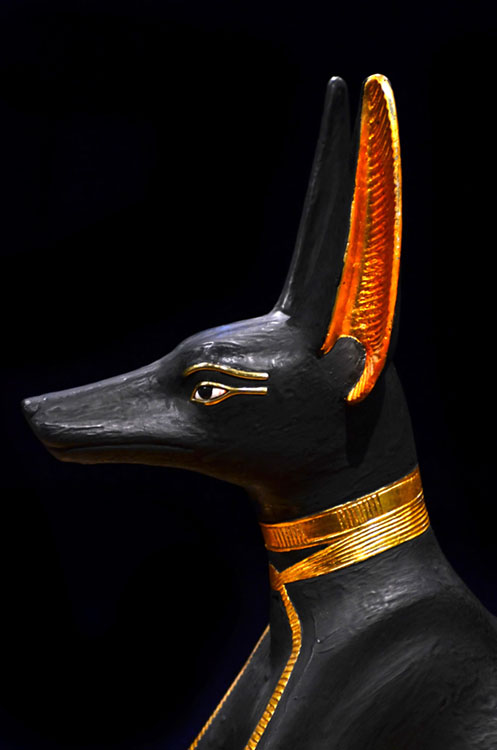Current Events Lesson Plan: April 13-19, 2017
Current Event: Mythic Monday: Anubis of the Afterlife
Anubis, depicted in ancient Egyptian art as a crouching jackal or dog, or as a man with a jackal’s head, is one of the best-known gods of ancient Egyptian mythology. He served as the god of mummification, the ancient Egyptian technique of embalming the dead. His main center of worship was at Kynopolis, which means Dog City in Greek. The culture of ancient Egypt existed for thousands of years. Over time, the role of Anubis changed, but he always held an important place in Egyptian mythology. Thousands of years ago in ancient Egypt, hungry jackals would dig up bodies buried in shallow desert graves and feed on them. To ancient Egyptians, who thought that a person’s body needed to be preserved in order to enjoy the afterlife, this was a fate worse than death itself. Consequently, people would pray and make offerings to the jackal god to spare the bodies of their loved ones. In this way, the jackal became associated with the dead, and Anubis was worshiped as the god of the underworld. As burials became more complex, another pest became a threat to the comfortable afterlives of ancient Egyptians: grave robbers. To ward off would-be robbers, artisans decorated tombs with sculptures and carvings of Anubis. Priests inscribed curses into the tomb walls, invoking the jackal god and promising punishment in this life and the next to any who desecrated the tombs. Later, Anubis was credited with inventing the mummification process, enabling mortals to live on in the afterlife.

This exquisite statue of Anubis, the god of mummification and the afterlife, was found in King Tutankhamun’s tomb. Credit: © Prisma/Alamy Images
Objective:
Ancient Egypt was the birthplace of one of the world’s first civilizations. This advanced culture arose about 5,000 years ago in the Nile River Valley in northeastern Africa. It thrived for over 2,000 years and so became one of the longest-lasting civilizations in history. The Nile River was the lifeblood of ancient Egypt. Its annual flood deposited the fertile soil that enabled Egypt’s farmers to raise a huge supply of food. The river also provided water for irrigation and served as Egypt’s main transportation route. The ancient Egyptians made outstanding contributions to the development of civilization. They created the world’s first national government, basic forms of arithmetic, and a 365-day calendar. They invented a form of picture writing called hieroglyphics as well as papyrus, a paperlike writing material made from the stems of papyrus plants. The Egyptians also built many pyramids, limestone temples, and the Great Sphinx. Three huge pyramids at Giza rank as one of the Seven Wonders of the Ancient World. The Behind the Headlines news story and related World Book articles explore ancient Egypt.
Words to know:
Discussion Topics:
1. Ask your students to name some ancient civilizations besides the Egyptians. (Students might say the Assyrians, Babylonians, Celts, Chinese, Greeks, Persians, Phoenicians, Romans.)
2. Ask your students to name some famous ancient Egyptians. (Students might say Cleopatra, Hatshepsut, Khufu, Nefertiti, Ramses II, Snefru, Thutmose III, Tutankhamun.)
3. Ask your students if they would rather live in ancient Egypt (or any other ancient civilization) or in modern times. Have them explain why.
4. Ask your students to use World Book’s Timelines feature to view or add to the History of Ancient Egypt timeline. (Students may wish to use the “History” section of World Book’s “Ancient Egypt” article for help.)


